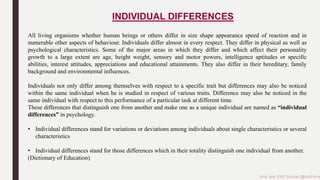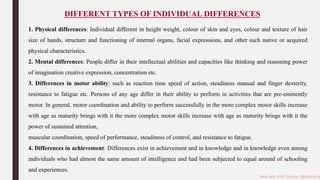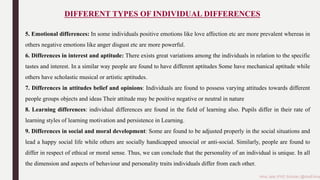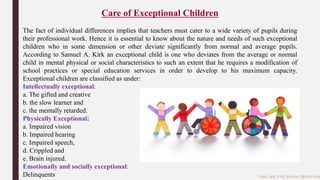The document discusses individual differences among humans, highlighting physical, mental, emotional, and social variations that affect personal development. It categorizes these differences and explores their causes, including genetic and environmental factors, while emphasizing the importance of recognizing and accommodating these differences in educational settings. Furthermore, it outlines the significance of personalized learning approaches and assessments to support diverse student needs.













